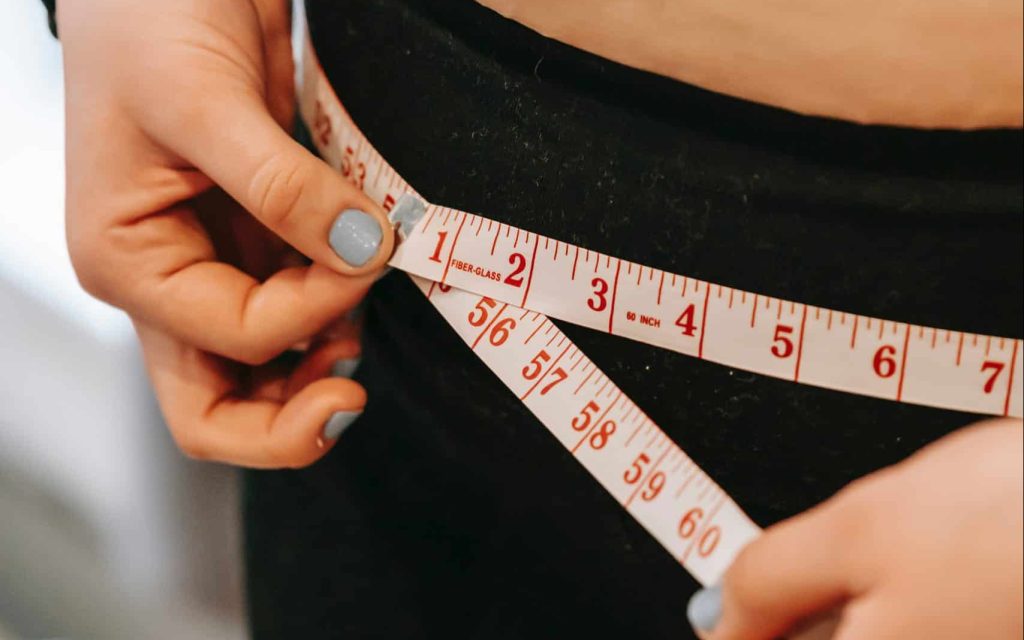Waist trainers are popular shaping garments usually made of stiff fabric lined with metal or plastic boning and fasten tightly around the torso using hook and eye clasps, laces, or buttons. Because waist trainers help create the appearance of an hourglass torso, they become appealing to people looking to regain their pre-pregnancy body shape.
Wearing a waist trainer might not be the best option during the immediate postpartum period, as the compression puts pressure on the still healing pelvic organs and soft tissues. Waist trainers can also irritate a c-section incision and be detrimental to the internal healing of the skin, connective tissue, and muscle layers that were cut through.
Because it takes between 6-8 weeks for the uterus to return to its pre-pregnancy size, it is advised that you wait at least 6 weeks after giving birth to begin using a waist trainer. There are also better options for supporting and shaping a post-partum belly, such as an abdominal binder or band.
How Do Waist Trainers Work?

Waist trainers aim to give you a more defined hourglass figure by cinching your waist in. The idea is to “train” your waist into becoming smaller by wearing it for progressively longer periods each day.
As you wear the waist trainer, the soft tissues of your waist and hips shift and compress to conform to its shape. As your waist becomes smaller, you are instructed to fasten the waist trainer tighter to further enhance its shaping effects.
While a waist trainer may create the desired appearance of an hourglass figure and a smaller waist, these results are almost always temporary. Because there is no evidence to support that waist trainers can reduce or redistribute abdominal fat, your body will return to its natural shape within a few hours or days of you taking it off.
In order to get lasting results while using a waist trainer, proper diet and exercise are important. Long-term toning, strengthening, and slimming are best achieved through a combination of a healthy diet and consistent exercise, not through tight squeezes and compression.
Some waist trainer brands and influencers advertise the use of waist trainers while exercising, stating that it “enhances” the toning and slimming effects of a workout. This, however, is not advisable as a waist trainer often restricts your range of motion and may impair your ability to inhale deeply.
Can You Wear a Waist Trainer After Giving Birth?
Human bodies aren’t like rubber bands that snap back immediately after being stretched out. It takes 9 months of growing and stretching for a human body to accommodate a full-term baby, so it isn’t quite realistic to expect a birthing person’s body to return to its pre-pregnancy shape in a relatively short period.
Some waist trainers claim to be able to shrink your uterus and help your body bounce back post-birth by providing tight compression around your torso. On the contrary, waist trainers may do more harm than good.
While wearing a waist trainer after giving birth, the rigid boning supports your torso and helps you maintain your posture. Because of this, your muscles do not have to work as much as they usually do to keep you upright.
Over time, the decreased use of your muscles can cause poor posture and even pain due to the weakening of the back and core muscles that would normally support your spinal health, mobility, posture, and continence.
A waist trainer can exert downward pressure on your pelvic floor, increasing the strain on the muscles and organs residing in your pelvic cavity. This can increase the risk of pelvic organ prolapse and urinary incontinence post-partum.
At the same time, a waist trainer also exerts upward pressure on your diaphragm and stomach, which can cause worsen acid reflux and indigestion. It can also cause shallow or upper chest breathing by limiting the range of motion at the base of your ribcage where your diaphragm is.
How to Safely Wear a Waist Trainer After Giving Birth

If you do wish to waist train after giving birth, it is important to learn how to do it safely and to understand what the risks of doing so are.
Water retention and post-partum edema caused by elevated progesterone levels can take up to 2 weeks to resolve. On average, it takes between 6 and 8 weeks for the uterus to come back to its pre-pregnancy size.
Because of this, it is best to wait at least 6 weeks, ideally 8, after giving birth to begin waist training. Of course, it is also a good measure to consult your doctor about using a waist trainer, especially after your body goes through something as dramatic and remarkable as creating and carrying another human being.
Always listen to your body when you are waist training. If you feel pain or significant discomfort while wearing a waist trainer, take it off or loosen it to where it feels comfortable. Do not sleep in a waist trainer and do not wear one for more than 8 hours at a time.
Waist Trainer Alternative After Giving Birth
After giving birth, you may need to use something that provides additional support for your back and abdominal muscles. If this is the case, a post-partum binder may work well.
Unlike a rigid waist trainer that uses high levels of compression to shrink your waistline, an abdominal binder designed for post-partum use provides support and uses gentle compression to stabilize your pelvis and abdomen as your organs and tissues return to their respective pre-pregnancy states.
Post-partum binders support your lower back, abdomen, and pelvis. At the same time, they are made of flexible materials that stretch to accommodate proper diaphragmatic breathing and a comfortable range of movement.
Post-partum binders also come in various styles that provide different advantages in terms of comfort and function. More common post-partum binders wrap around your torso using Velcro fasteners that can be tightened or loosened to your liking.
Others come in the form of high-waisted underwear that bears a similar appearance to a shapewear girdle. There are also post-partum support bands that sit around the lower back and below the navel to provide support to the hips and lower abdomen.
After giving birth, some people experience a condition known as diastasis recti, where the rectus abdominis muscles that form the six-pack weaken and separate. While a post-partum binder won’t cure diastasis recti, it may help pull the separated abdominal muscles medially and provide support around your torso while the muscle heals and comes back to its normal position.
Post-partum binders are also safe for use after a c-section. They function similarly to surgical binders used after other types of abdominal surgery and provide many of the same benefits. Using one may help with pain management and improved mobility post-operatively. They also reduce any discomfort you may feel when you cough, sneeze or laugh.
The Takeaway
While it is possible to use a waist trainer after giving birth, you must exercise caution while doing so. Do not rush into waist training too early in the post-partum period and listen to your body when you need to rest and take a break from waist training.
If you do wish to use a compression or shaping garment in the immediate post-partum period, a post-partum binder is a safer alternative to a waist trainer and can provide your body with an adequate amount of support during your post-birth recovery period.